Prescribing Data
-
Background
Where does prescribing data come from? -
Standardisation of prescribing
-
Measuring PrescribingPrescribing terminology
-
Data stored in an NHS FP10 dispensing token and how it can be used
-
What are the drivers affecting spend on medicines?
-
Cost growth drivers
-
Accessing prescribing data
-
Factors Affecting PrescribingManaging growth in prescribing
-
Each measure is just one part of the jigsaw
-
Variations in prescribing
-
What other factors can affect prescribing data?
-
Using Prescribing DataDifferences between clinical systems and NHSBSA data
-
Accessing Prescribing DataCase studies
Quizzes
Accessing prescribing data
Watch the video below to find out more about sources of prescribing data.
Prescribing Data Tools using GP Clinical System Data
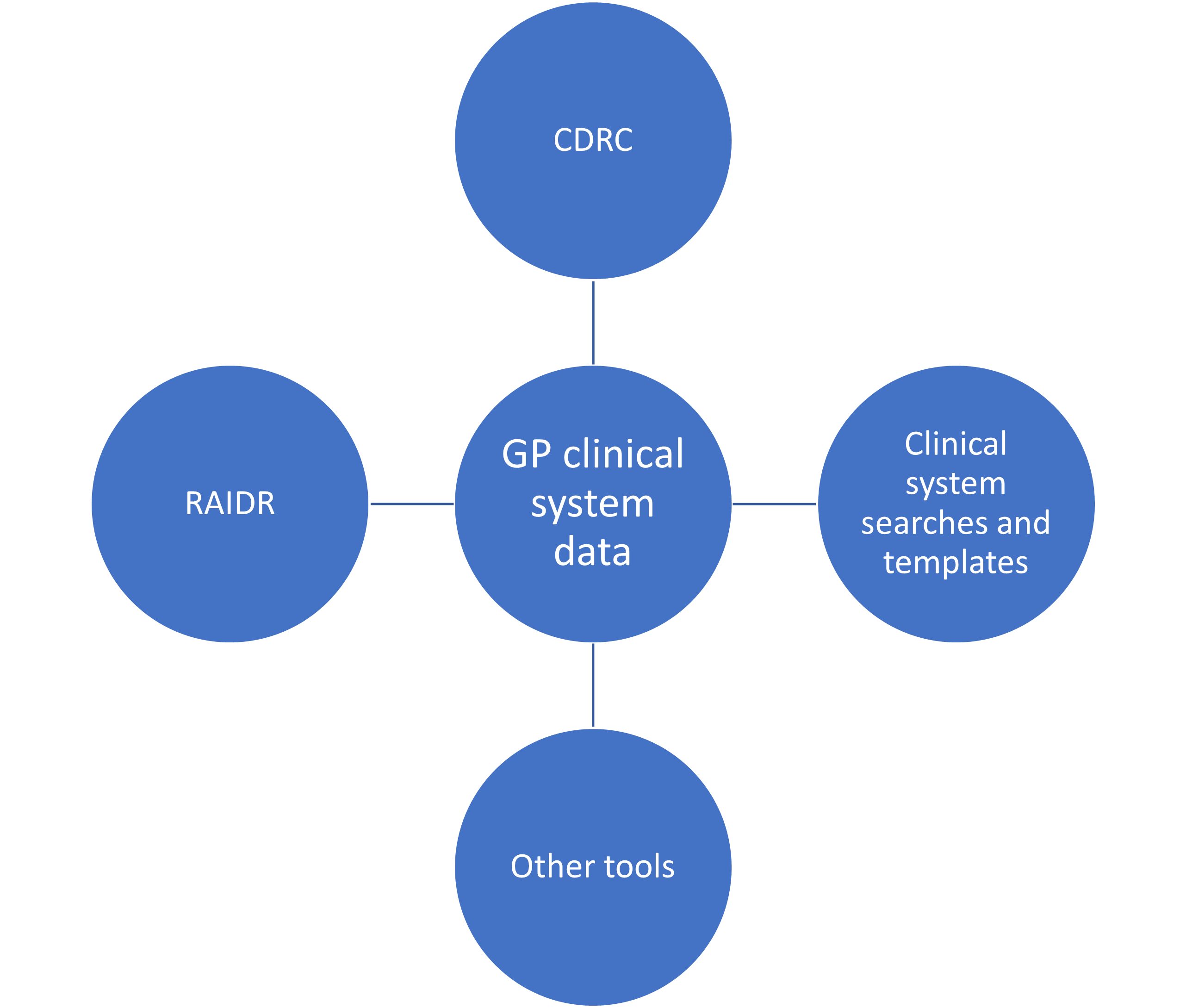
Patient level prescribing data, derived from GP clinical systems is used in a variety of tools that can be used to analyse prescribing in specific cohorts of patients and identify patients to support patient safety and prescribing initiatives.
Expand the sections below to find out more about the different sources of prescribing information.


Reporting functions within GP clinical systems allow users to build bespoke searches and templates to identify patients for specified parameters. Clinical system searches provide the most up to date information regarding prescribing and can provide patient identifiable information at individual prescriber level. A limitation of clinical system data is this only provides information on items prescribed, and does not indicate if the patient had the prescription dispensed.

Certified as a Class I Medical Device, the RAIDR Primary Care Dashboard provides GP clinical system data at aggregate and patient level, supporting clinical cohort analysis, and identification of at-risk patients using risk stratification tools. RAIDR facilitates improvements in data quality and optimisation of QOF registers to improve clinical outcomes for patients and supports reporting for national and regional initiatives and programmes including Population Health Management.
The Tool contains a number of dashboards:
Drug to Diagnosis Dashboard
A tool to identify patients prescribed medication that are not diagnosed with related conditions.
- Patients on Allopurinol v Gout Diagnosis
- Patients on Amiodarone, Disopyramide v Dysrhythmia Diagnosis
- Patients on Bicalutamide / Buserelin / Goserelin / Flutamide v Prostate Ca Diagnosis
- Patients on Bisphosphonates v Osteoporosis Risk Diagnosis
- Patients on Calcipotriol v Psoriasis Diagnosis
- Patients on Carteolol Pilocarpine Brinzolamide Brimonidine v Raised Intra-Ocular Pressure Diagnosis
- Patients on Clozapine Risperidone Olanzapine v Psychosis Diagnosis
- Patients on Colchicine v Gout Diagnosis
- Patients on Depot Antipsychotics and Psychosis Diagnosis
- Patients on Digoxin v AF or Heart Failure Diagnosis
- Patients on Fluoxetine v Depression Diagnosis
- Patients on Gold, Penicillamine or Leflunomide and RA / Inflam Arthritis Diagnosis
- Patients on Hydroxocobalamin v Pernicious Anaemia Diagnosis
- Patients on Inhaled (Lung) Steroids v Respiratory Disease Diagnosis
- Patients on Insulins & Other Antidiabetics except Metformin v Diabetes Diagnosis
- Patients on Lamotrigine v Epilepsy Diagnosis
- Patients on Latanoprost, Timolol, Dorzolamide v Glaucoma Diagnosis
- Patients on Levetiracetam v Epilepsy Diagnosis
- Patients on Levothyroxine v Hypothyroid Diagnosis
- Patients on Mesalazine/Asacol v Inflammatory Bowel DiseaseDiagnosis
- Patients on Montelukast v Asthma/Urticaria Diagnosis
- Patients on Paroxetine v Depression Diagnosis
- Patients on Pizotifen v Migraine Diagnosis
- Patients on Predfoam Budesonide Rectal v Inflammatory Bowel Disease Diagnosis
- Patients on Roaccutane/Tretinoin v Acne Diagnosis
- Patients on Tamoxifen v Breast Ca Diagnosis Patients on Tiotropium v COPD Diagnosis
Prescribing safety
A tool to identify patients who may be at risk from the medication they are prescribed. Patients are identified from the clinical codes allocated to the patient within the practice clinical system.
- Prescribed warfarin (last 6 months) and no INR test (last 3 months)
- Prescribed methotrexate (last 6 months) and no full blood count (last 3 months)
- Prescribed methotrexate (last 6 months) and no liver function test (last 3 months)
- Women with thrombosis diagnosis (before 6 months ago), and prescribed combined hormonal contraceptive (last 6 months)
- Has asthma (not resolved) and prescribed beta blockers (last 6 months)
- Aged 75+ with ACEI or loop diuretic prescription (last 6 months) and not had renal function or electrolytes test (last 12 months)
- Peptic ulcer diagnosis (before 6 months ago), no PPI prescription (last 6 months) and prescribed NSAID (last 6 months)
Long Term Conditions
A tool to identify patients who may be at risk from the medication they are prescribed. Patients are identified from the clinical codes allocated to the patient within the practice clinical system.
Dashboards providing information at practice level on cohorts of patients for the following long term conditions:
- Atrial fibrillation
- Dementia
- Diabetes Frailty

The Clinical Digital Resource Collaborative (CDRC) is a North East and North Cumbria NHS owned digital resource with national reach, that enables individual clinicians and clinical organisations to deliver gold-standard patient care efficiently.
CDRC improves care and safety of patients by identifying undiagnosed, misdiagnosed conditions or those that are coded incorrectly and therefore allow clinicians to provide the appropriate care at the right time. CDRC allows for flexible implementation and is fully safe and compliant with data sharing agreements. CDRC improves performance management with a suite of searches/reports which provide real-time data on many aspects of clinical performance. Through its central repository CDRC saves time and money by preventing clinicians across our region having to reinvent and create digital resources by facilitating a central repository.
CDRC Precision provides primary care teams with access to safety assessed, quality assured digital tools and resources from a trusted source which integrate into their organisation’s clinical software and reflect agreed and accepted clinical pathways and best practice. Resources are free to access and hazard reviewed by NECS.
Click on the links below to CDRC Resources for SystmOne and EMIS
The video below is taken from an AHSN information event held on 7th October 2020, and shows Dr Gareth Forbes (CDRC Precision Co-Founder) demonstrating the CDRC Precision FH search in SystmOne.
The Electronic Prescription Service (EPS) and electronic Repeat Dispensing (eRD) utilisation dashboards provide information on the electronic prescription service and electronic repeat dispensing.
The dashboards allow GP practices, CCGs, and other bodies to:
- see the variation in EPS and eRD prescribing across GP practices, within a CCG and across CCGs
- see trends and variations in EPS and eRD dispensing across dispensers, and within Sustainability and Transformation Partnerships (STPs)
- help prioritise potential areas of activity
- help monitor the impact of initiatives to increase EPS and eRD utilisation
A video and step by step guide are available on the NHSBSA website showing step-by-step instructions for using the EPS and eRD prescribing data dashboard.
A number of other tools are available, using data from GP clinical systems to support identification of patients for review, improve patient safety, and support medicines optimisation and pharmacy teams at ICB, PCN and practice level. The list of resources below is not exhaustive. Please note NECS and NENC AHSN are not responsible for the content of external websites.
| Resource | Summary |
|---|---|
| Ardens | Ardens is a clinical decision support and workflow optimisation solution that is currently being used in over 5,000 GP practices. Ardens provides standardised clinical templates offering national best practice guidance and accurate coding of clinical data covering many clinical areas to save time during consultations and ensure all clinicians whether they are GPs, nurse practitioners, pharmacists or paramedics are following the same national clinical guidelines. This includes multi-morbidity templates to assist with the management of complex patients with multiple medical conditions. Ardens Website |
| PINCER | PINCER is the Pharmacist-led Information technology iNtervention for the reduction of Clinically important ERrors in medicines management. The intervention involves searching GP clinical systems using computerised prescribing safety indicators to identify patients at risk from their prescriptions, and then acting to correct the problems with pharmacist support. PINCER Website |
| PrescQIPP | PrescQIPP produce evidence-based resources and tools for primary care. PrescQIPP regularly develop bulletins and briefings containing clinical evidence, information and guidance about a range of treatments and conditions, and these are often accompanied by pre-built clinical system searches to support identification of patients. Registration may be required to access some bulletins and resources. PrescQIPP Website |
Prescribing Data Tools using NHSBSA Prescription Data
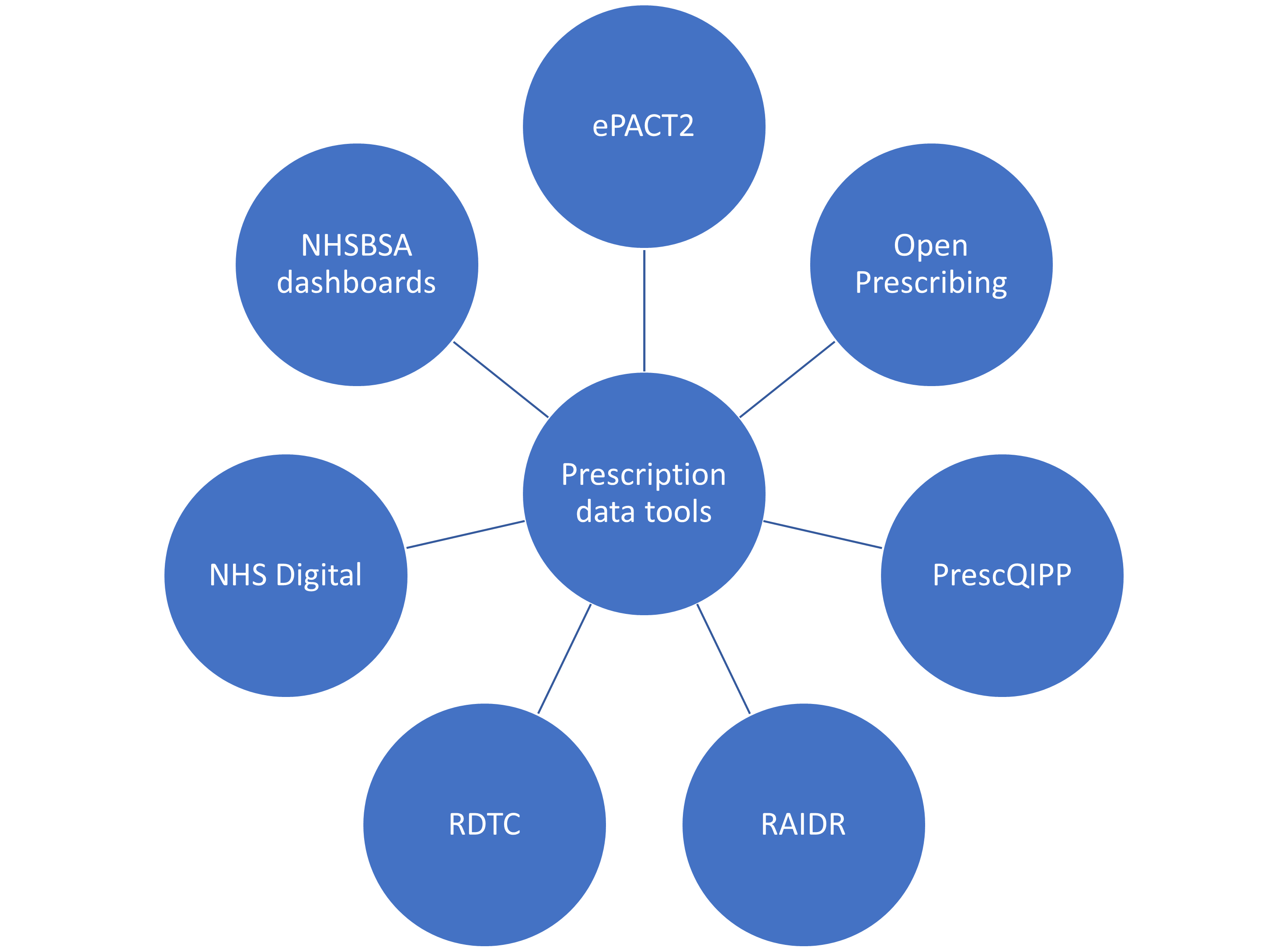
Prescription data, derived from the NHSBSA, provides the majority of data published and available about primary care prescribing.
A number of tools are available that transform prescription data into easily accessible and user friendly formats to facilitate the monitoring of prescribing, identification of medicines optimisation priorities and support population health management.
There is a delay of approximately 6 weeks from prescriptions being dispensed and the data being made available by the NHSBSA. Some tools have a longer delay due to the need for additional data processing and governance checks before publication.

PrescQIPP produce evidence-based resources and tools for primary care. PrescQIPPs data hub publishes prescribing data to support monitoring and identification of a range of clinical and strategic priorities.
| Dashboard | Description |
|---|---|
| PrescQIPP dashboard information | A collection of ad-hoc single page dashboards focusing on data out of the standard reporting suite |
| Data highlights | A collection of ad-hoc single page dashboards focusing on data out of the standard reporting suite |
| Clinical snapshots | Visually reporting on a range of clinical or therapeutic areas, including categorisations of often complex areas |
| Financial reports | Reports that focus on financial activities relating to all or key parts of the monitoring that medicines teams do |
| Health system profiling | A selection of reports to profile your health system in a changing NHS |
| Practice level data reports | A whole range of extra reports and integrations into the current visual analytics reports |
| Scorecards | Comprehensive indicators and monitoring of projects relating to PrescQIPP’s work, including opportunity and achievement |
| Strategic activity reports | Reports that focus on strategic activities relating to all or key parts of the monitoring that medicines teams do |
| Bulletin data packs | Evidence-based bulletins with a visual data pack |
Access PrescQIPP here: https://www.prescqipp.info/
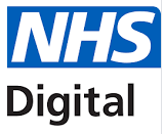
The NHS Digital Prescribing team extracts and analyses prescribing data to identify trends and variation, and to support national policy. They produce reports and publications. They work closely with a range of organisations which have an interest in this information, including the NHS Business Services Authority, National Institute for Health and Clinical Excellence (NICE) and the Department of Health.
Prescribing publications include:
- Medicines and Pregnancy Registry
- Innovation scorecard: NICE Technology Appraisals in the NHS in England
- Use of NICE appraised medicines in the NHS in England

ePACT2 gives authorised users access to prescription data and allows you to:
- access easy to use interactive reports and dashboards
- look at high level data summaries down to individual prescription item and patient level detail
- build bespoke analysis
- export data from reports and dashboards
ePACT2 data is available 6 weeks after the dispensing month and contains data down to single prescription level.
Watch the short video below from the NHSBSA that explains what ePACT2 is and the data it holds.
NHSBSA run regular training free webinars for GP practice and PCN users. There are also a range of training guides and videos, tailored to different types of users, and covering a range of ePACT2 topics.
Click the links below for access and/or training
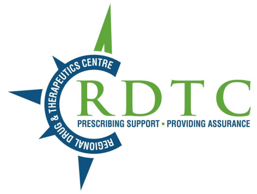
The Regional Drug and Therapeutics Centre (RDTC) Prescribing Support Unit provide strategic prescribing support services to the NHS, including evidence evaluation and analysis of prescribing data.
A wide range of regular publications are produced by the RDTC on a frequent basis, and are available to staff at NHS stakeholder organisations via the RDTC website (login required).
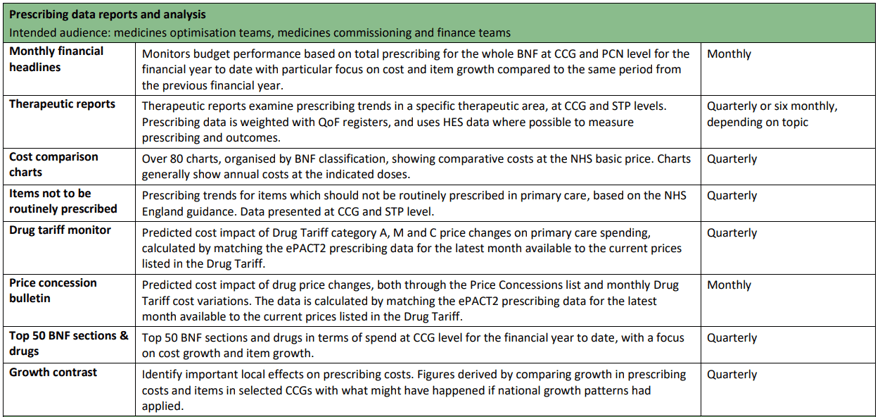

OpenPrescribing is one of a range of projects built by the Bennett Institute for Applied Data Science at the University of Oxford, to help make complex medical and scientific data more accessible and more impactful in the real world.
It provides a search interface onto the raw English Prescribing Dataset published by the NHS Business Services Authority.
OpenPrescribing is open access and does not require a login to access.
| Dashboard | Description |
|---|---|
| Open Prescribing dashboard information | Information on the OpenPrescribing dashboard and its features |
| Analyse | The Analyse page on OpenPrescribing allows you to run your own searches on GP prescribing data |
| Practice Dashboards | Search for a practice by name, and see how this practice compares with its peers across the NHS in England |
| PCN Dashboards | Search for a PCN by name, and see how this PCN compares with its peers across the NHS in England |
| Trends | Spot national trends, see how national prescribing trends have changed since 2010, for any drug or BNF section that interests you |
The Electronic Prescription Service (EPS) and electronic Repeat Dispensing (eRD) utilisation dashboards provide information on the electronic prescription service and electronic repeat dispensing.
The dashboards allow GP practices, CCGs, and other bodies to:
- see the variation in EPS and eRD prescribing across GP practices, within a CCG and across CCGs
- see trends and variations in EPS and eRD dispensing across dispensers, and within Sustainability and Transformation Partnerships (STPs)
- help prioritise potential areas of activity
- help monitor the impact of initiatives to increase EPS and eRD utilisation
A video and step by step guide are available on the NHSBSA website showing step-by-step instructions for using the EPS and eRD prescribing data dashboard.

The RAIDR Prescribing Dashboard facilitates informed prescribing decisions and supports broader population health management. The dashboard provides access to monthly prescribing data at system, PCN and practice level, providing information on prescribing spend, cost growth, and performance against key prescribing indicators.
A case Study using RAIDR data is included in the Using Prescribing data section of this elearning
The Electronic Prescription Service (EPS) and electronic Repeat Dispensing (eRD) utilisation dashboards provide information on the electronic prescription service and electronic repeat dispensing.
The dashboards allow GP practices, CCGs, and other bodies to:
- see the variation in EPS and eRD prescribing across GP practices, within a CCG and across CCGs
- see trends and variations in EPS and eRD dispensing across dispensers, and within Sustainability and Transformation Partnerships (STPs)
- help prioritise potential areas of activity
- help monitor the impact of initiatives to increase EPS and eRD utilisation
A video and step by step guide are available on the NHSBSA website showing step-by-step instructions for using the EPS and eRD prescribing data dashboard.

